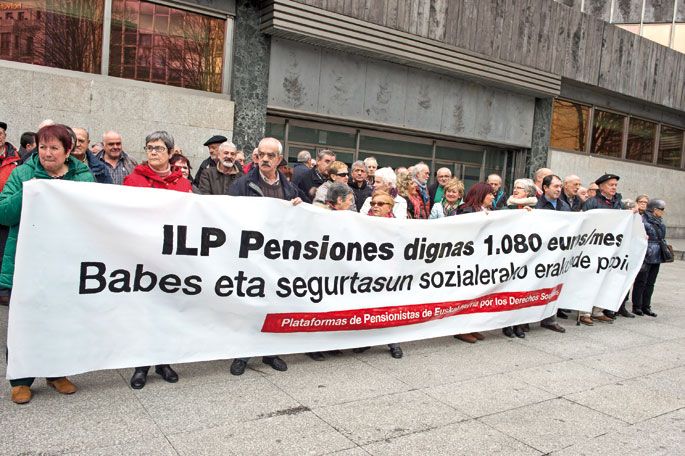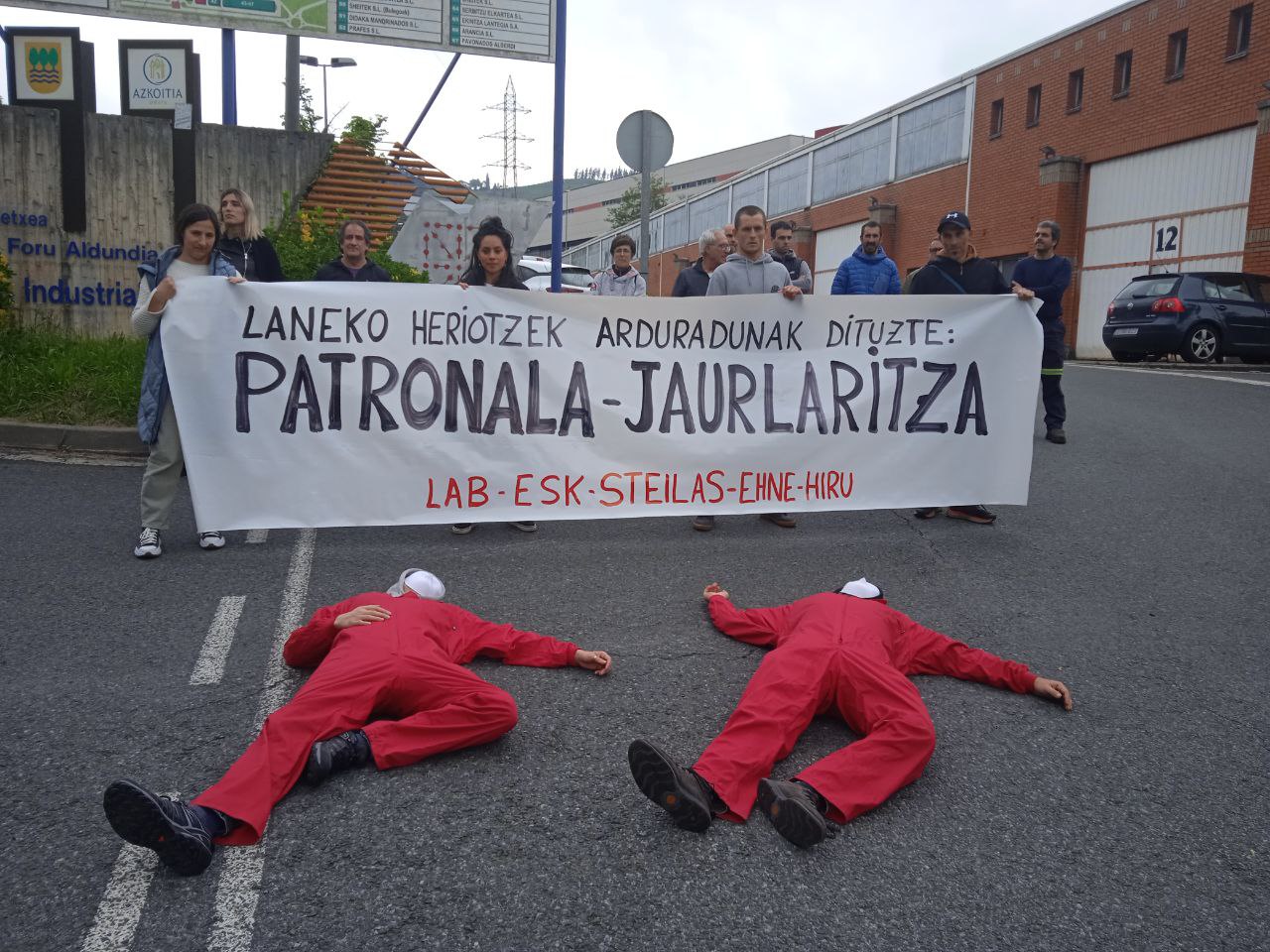Five questions (and answers) on the pension system of the future
- The PNV’s proposal to have a Basque Social Security has once again put the debate on pensions in the Basque Country on the table. The document approved by the Jeltzales argues that the pension system managed in it would be viable and advocates a mixed model. The issue has arisen from the usual questions, and it has again been shown that, above all, we were faced with a political decision.

The debate is not the day before yesterday. But the PNV’s proposal to create a Basque Social Security at the general assembly that it has held in Pamplona with its members has had many reactions, surely because the leaders of Sabin Etxea have gone into detail on how to implement this plan. The PNV EBB Chair, Itxaso Atutxa, did so on the radio: “In Euskadi we have managed the economic issues with the best results.”
The PSE has immediately raised the spectre of the lack of viability, with negative balances in the CAV and Navarre for a long time, and EH Bildu has called for cooperation. The Abertzale coalition has proposed in the Congress of Deputies raising the minimum pension to EUR 1,080, coinciding with the demand for pensioner platforms.
But what pension system would we need in the future? To help draw this here are five basic questions and answers.
1) WHAT SITUATION ARE WE IN?
Although social security is recognised in the Gernika Statute, this competence has never been transferred. Consequently, pensioners and other social sectors receive their pensions from the so-called “single fund” of the Spanish State. In the last nine years we have taken more than the CAV and Navarre contributors bring to that fund to pay their pensions – in total, there are 660,000 pensioners in Hego Euskal Herria.
This deficit is the one used by the defenders of the centralised model to argue that the Basque pension system would not be sustainable, as it would represent a total mismatch of EUR 2 billion. However, the Jeltzales consider the situation to be “cyclical” and that there are other factors in pension sustainability: labour market structure, wage developments, etc. In this feasibility debate, LAB has also included the suspense: it is not a question of whether the own pension system would be viable, but of how to make it viable.
Many of its agents have considered the model of the Spanish pension system exhausted. A striking fact: over the last four years Madrid has put its hand in the pension reserve fund and has gone from having EUR 66,000 million saved to EUR 33,000 million. In this step, in 2019, potage would be empty. This shows that the deficit problem is widespread.
2) IF WE ARE GETTING OLDER, HOW TO MAINTAIN PENSIONS?
The population is aging, we are born fewer children and die more tarde.La OECD estimates that the population over 64 years will go from 28% to 51% in 2050. In the CAV, there are 1.68 pensioners for each, while in Navarra the coverage is 1.96. The OECD recipe is contradictory: to make the labour market even more flexible and to abolish early retirements – apparently to deepen labour and PP pension reforms –.
But it doesn't look at the other side of the coin. The promotion of employment opportunities and a decent wage for young people would be influenced by the average contribution rates and the birth rate. The issue of pensions is directly related to the conditions of employment of young people.
3) WHO MUST PAY FOR PENSIONS?
The current public system is largely contributory. That is to say, from the gross wage we allocate an amount to feeding that ‘pension fund’, and in future we will have contributory pensions – within the minimum and maximum amounts.
However, in some European countries there is a mixed mechanism. In other words, part of the cost of pensions is paid on the basis of budgets; the state ensures that pensions, hospitals and schools are open.
There is also the possibility of financing the system via taxation. The PNV has adopted a document in which it argues that non-contributory pensions and income collateral would be paid with the proceeds.
4) ARE WE GOING TO PRIVATIZATION?
Jeltzales also provide for another funding route: supplementing benefits with EPSV. These forward-looking companies have a great deal of weight in the Basque Autonomous Community and are responsible for collecting savings of billions of euros. As they have bonuses, they have often been in the whirlwind of allegations of tax leakage.
The public-private issue generates a great deal of mistrust, also in the area of pensions. Perhaps with proper use they could serve to dignify the retirement of workers. For example, officials have their own EPSV, Itzarri and Elkarkidetza. In this particular case, as stated in the collective bargaining, the Administration must provide an amount to provide these PPE – the ELA trade union has denounced that the Basque Government is not making such contributions. It should also be clarified whether the reduction in public pensions is compensation for the promotion of additional forecasts.
5) HOW SHOULD A FAIR AND SUPPORTIVE PENSION SYSTEM?
Seven out of ten pensioners from Hego Euskal Herria currently earn less than EUR 1,000 per month, half of whom have an average pension of EUR 665. How much does it take for the future Basque Social Security to offer decent pensions? What should I put?
The Euskal Herria Pensioners' Platform has made it clear that below EUR 1,080 there is only poverty and social exclusion. To this end, it has presented a popular legislative initiative in the Basque Parliament calling for the lowest pensions to be completed to that minimum. However, the initiative was rejected with the votes against PNV, PSE and pp. They are now collecting signatures.
What is the thought of the small trace of the complaints made on 28 April and that their only succession is the continuous chain of accidents and deaths of workers. In Azkoitia, once again in construction, a 62-year-old worker dies in a very common and therefore avoidable... [+]
When grandparents were young, retirement was represented as a time to enjoy life. Period of collection of the fruits of the work carried out during these years. What a satisfaction! It is a pity that young people today are never able to feel. You might think I'm a pessimist, but... [+]
























